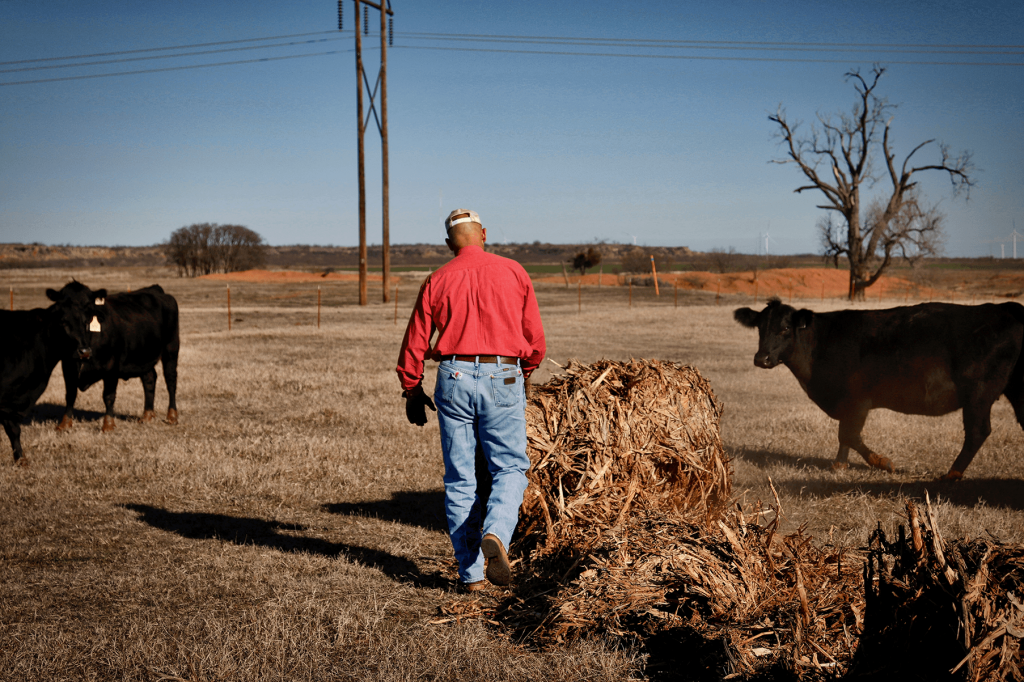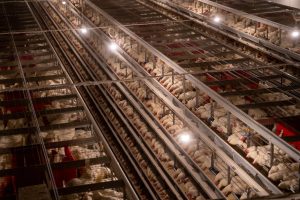We're dispelling the myths of industrial agriculture.
Welcome to our Big Ag Mythbusters blog series! We are here to debunk the tall tales that multinational agrifood corporations use to defend their business model and defeat any meaningful reforms. We’re publishing this series alongside our groundbreaking report titled “The Truth About Industrial Agriculture: A Fragile System Propped up by Myths and Hidden Costs.”
MYTH
Industrial agriculture is inevitable.
The Truth
“[W]e don’t feel like this is really something you can stop.”
These words, spoken by the president of the Farm Bureau, ended a recent Washington Post article on the meat industry’s consolidation with a resounding finality. For decades, the widespread belief that consolidated, industrialized agriculture is inevitable has operated as a self-fulfilling prophecy, a way to persuade decision-makers to support policies that entrench the consolidated status-quo: this is the way agriculture looks, and therefore the only way it can ever look.
The truth is, industrial agriculture’s sprawling, consolidated, multinational market domination is not the natural order of things. It didn’t grow out of consumer demand or fair and competitive markets. Industrial agriculture is propped up by a vulnerable business model that has publicly failed. It owes its entire existence to individual actors — at the USDA, in finance sectors, in Congress, and certainly at the White House — who made specific, intentional decisions to promote it as the future of agriculture.
Industrial agriculture owes its entire existence to individual actors who made specific, intentional decisions to promote it as the future of agriculture.
These decisions can be reversed.
Here’s the thing about specific, intentional decisions: they can be reversed. Different decisions can be made by different actors. Different decisions will usher in change, revealing that what many believed to be inevitable was merely one stop along the way to a more fair, inclusive, and competitive agriculture system.
Where Are We Now — and How Did We Get Here?
At present, the consolidation situation is pretty grim. Vertical, horizontal, and backward integration at local and global levels has trapped farmers in suffocating contracts, exploited workers, and degraded farmland with extensive monocropping and chemical inputs. All of this leaves consumers to navigate deceptive marketing and limited choices on the grocery shelves.
How did this happen? For much of America’s history, family farms fed their communities and were integrated into their local economies; but starting in the 1970s, politicians influenced by anti-regulation economist Robert Bork and the Chicago School of economics began to lead the country down a new path.
USDA Secretary Earl Butz was the original “get big or get out” father of industrial agriculture. Serving under President Nixon, Butz began diverting the agency’s support for the family farm model toward the interests of agribusiness. With Butz at the helm, farms swelled in both acreage and debt, and the U.S. agriculture system pumped corn and soybeans out from chemical-doused fields without regard for soil health, human health, or what the markets could bear.
Sure enough, the bubble burst, leading to the devastating farm crisis of the 1980s. But the industrial machine Butz had created to build corporate wealth off the backs of farmers and workers continued to thrive, fuelled by many successors.
Nearly every farm bill since then has aided the corporate takeover of our food system. Reagan’s record-breaking expensive farm bill created the crop subsidy system that largely exists today. Clinton scaled back government antitrust intervention by dismantling price supports and supply management programs in the 1996 Freedom to Farm Bill. Deliberate policy decisions like these formed and strengthened the Feed Meat Complex, in which the government subsidizes industrialized monoculture grain operations to cheaply feed the industrially-raised livestock owned by large, monopoly meatpackers.
Now that these conglomerate-friendly priorities are baked into agricultural policy, the resulting system self-perpetuates by way of lending practices. For example, a young couple interested in starting a farm will find it easier to borrow money to build and operate a Confined Animal Feeding Operation (CAFO) than to access land to grow crops or pasture-raise livestock. That CAFO loan will be backed by the US government, and may even be packaged with other benefits like subsidies from the USDA’s Environmental Quality Incentives Program, which will pay for “contamination reduction strategies.”
The government’s endorsement assures local banks that these loans pose no significant risks to the lender and can bear lower interest rates — all of which incentivizes and encourages the CAFO model to flourish and expand at the expense of other models.
Now that these conglomerate-friendly priorities are baked into agricultural policy, the resulting system self-perpetuates by way of lending practices.
What Could We Change?
If all of these feels overwhelming, it might help to hear that pro-competition forces have taken on insidious consolidation in the past — and won.
In the early 1900s, worker and market abuses by giant meatpacking companies had reached crisis levels. The public response to Upton Sinclair’s The Jungle prompted President Roosevelt to investigate the meatpacking industry. Thirteen years later, President Wilson went on to order the Federal Trade Commission to investigate anti-competitive practices in the meatpacking industry.
Wilson’s Department of Justice also launched an antitrust suit against the “Big Five” meatpackers, leading to an agreement barring companies from vertically integrating, which freed up the market to be more competitive for other actors. This regulatory empowerment was further codified into law with the Packers and Stockyards Act, which empowered the USDA to protect livestock producers from anti-competitive practices.
Before these reforms, the “Big Five” meatpackers controlled up to 75% of the market. Once policymakers made different decisions, the four-firm concentration ratio (the percentage of market share taken up by the largest firms, indicating how competitive a market is) had fallen to 26% for beef.
It was only later — and due to very specific actions — that the success of these antitrust policies was overturned: President Reagan weakened merger and acquisition guidelines and terminated the agreement with packers prohibiting vertical integration. His choices had consequences: the four-firm concentration ratio for beef spiked from 25% in 1977 to 80% in 2007.
While these actions gave rise to our current era of consolidation, the foundation for fair markets remains. We can build on it with legislation like the Farm System Reform Act and the Strengthening Local Processing Act, which would bolster the Packers and Stockyards Act and facilitate the growth of a new food and agriculture system.

Other policies shaped by Farm Action have been incorporated into legislation, introduced to both chambers of Congress (often with bipartisan sponsors), and endorsed by our political partner, Farm Action Fund.
Another opportunity on the horizon is the 2023 Farm Bill, in which we have the chance to shift government support away from monoculture operations and industrialized practices and toward more regenerative forms of agriculture.
Why Now?
You might be asking: in such divided times, what makes us think that change is possible?
For starters, the pandemic has placed the frailty of the global concentrated food system on center stage. Everyone has firsthand experience of the catastrophic failures possible when corporations choke the food production and distribution system for their own profit.
Next, we’re encouraged by the arrival of new actors on the scene who seem poised to make different decisions: the Biden Administration has made a monumental commitment to competition in the food and agriculture system — and directed the agencies under its purview to do the same. The FTC, USDA, and other agencies are now staffed by staunch advocates of fair markets, ready to carry out the Administration’s priorities. And recently, both the Senate and the House Agriculture committees held historic hearings on concentration in the cattle industry, showing a new level of Congressional interest in the problem.
The tide is turning against Big Ag.
We hope you’ll consider joining our growing movement of farmers, workers, rural communities, and eaters.
Finally: the tide is turning against Big Ag. People are increasingly aware that consolidation inflicts harm — on farmers, on workers, on rural communities, and on everyone who eats. Our polling shows that 76% of Americans would vote for a candidate who called for an end to corporate control of agriculture and a moratorium on factory farms.
We hope you’ll consider joining — on social media, through an advocacy campaign, or simply by staying in touch — our growing movement of farmers, workers, rural communities, and eaters. If we work together, we can prove that the only true inevitability is change.
Written by Dee Laninga and Anna Straus; designed by Dee Laninga; edited by Dee Laninga, Angela Huffman, Emily Miller, and Joe Maxwell; concept developed from “The Truth About Industrial Agriculture: A Fragile System Propped up by Myths and Hidden Costs” by Emily M. Miller.






